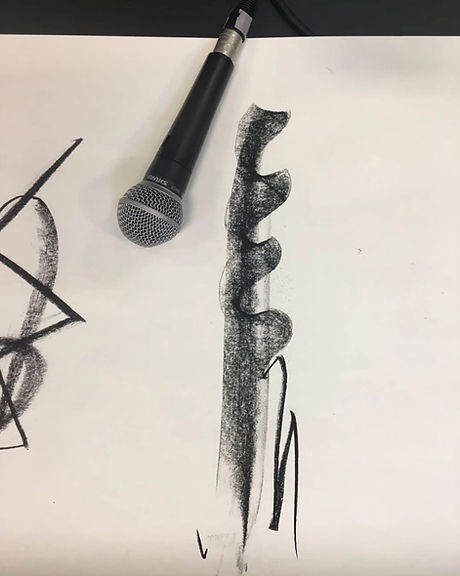
Discursos polifónicos opens as a space for listening, where the interview format becomes a performative device to ask ourselves—and one another—about complicity. It seeks to position both performers and spectators as subjects of listening, from the perception of their own bodies as they share time and space together.
Sound artist Ernesto Rosa and dancer-choreographer Natalia Jiménez draw upon a living archive: Audiographies of an Instant, a constellation of voices gathered over the years, where stories of complicity resonate—stories that emerge in the act of performance itself.
Polyphonic Discourses is also an attempt to rewrite the body, through the nuances of silence, the power of internal engines, and all the memories they carry within.

Audiographies of a moment of complicity in the 10-year artistic collaboration between Iris Heitzinger and Natalia Jiménez
Audiographies of a moment of complicity in the work "Woolf" between Jordina Millà and Natalia Jiménez
Audiographies of a moment of complicity in the work "Woolf" between Jordina Millà and Natalia Jiménez
Audiographies of a moment of complicity in the work "Geometry of Experience" between Anna, Victor y Natalia
This research is initially based on an artistic archive created over the past few years called "audiographies of a moment": a collection of audio recordings taken from interviews in which stories have emerged about a moment of complicity lived with another person.
The recording dynamic is based on the tools provided by the explicitness interview (Vermersch, 1994) from a micro-phenomenological approach (Petitmengin, 2006). The principles of this technique have been shared in recent years by the dancer and dance scholar, Federica Fratagnoli (Siena, 1973), with dancer and choreographer Natalia Jiménez (Jaén, 1980) in an intuitive and empirical way in several of their creative processes in previous works such as Aula (2019), Woolf (2021), SOLADA (2023), and Geometría de la experiencia (2023).
The interviews serve as a guide not for the interviewer, but for the interviewee, in this case, the artist. Through specific questions that lead to a state of evocation, lived experiences are narrated. What was lived, which remains in the realm of the implicit, is made explicit; that flow of information that is not always consciously recorded. In this way, it is possible to describe a lived experience that allows the interviewee to expand their consciousness.
With the support of. Centro Párraga, Murcia